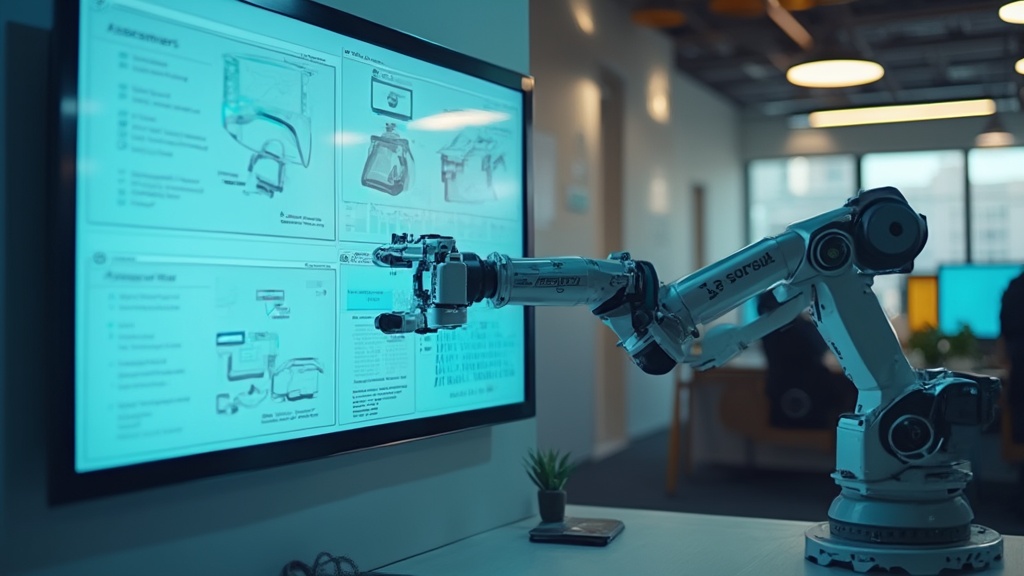Introduction
In the rapidly evolving world of supply chain management, Robotic Process Automation (RPA) emerges as a game-changer, streamlining operations and driving efficiency to unprecedented levels. By automating repetitive and time-consuming tasks, RPA significantly reduces processing times and ensures higher accuracy, effectively minimizing errors in order processing and inventory management. The ability of RPA to operate around the clock without incurring additional labor costs allows organizations to handle peak periods effortlessly, leading to notable increases in throughput.
Importantly, RPA empowers human managers to focus on strategic initiatives, enhancing overall productivity.
Recent studies highlight the critical role of automation in logistics, with projections indicating that it will account for more than a third of capital spending. Companies like OnProcess exemplify the successful integration of RPA, leveraging automation, AI, and data-led decision-making to maintain visibility across the supply chain, from planning to asset recovery. However, the journey to successful RPA implementation is not without challenges.
Many automation projects fail due to a lack of cohesive vision and poor understanding of the technology. Implementing a robust strategy with clear design principles and future growth consideration is essential for harnessing the full potential of RPA in supply chain management.
Benefits of RPA in Supply Chain
Robotic Process Automation (RPA) transforms logistics management by optimizing operations and enhancing efficiency. Automating repetitive and time-consuming tasks drastically reduces processing times and ensures higher accuracy, minimizing errors in order processing and inventory management. The capability of RPA to function around the clock without additional labor costs allows organizations to handle peak periods effortlessly, leading to significant increases in throughput. Moreover, RPA’s role goes beyond simple task handling; it allows human managers to concentrate on strategic initiatives, improving overall productivity.
Recent research indicates that mechanization in logistics and fulfillment is expected to represent over a third of capital expenditures, highlighting its essential function in contemporary distribution networks. “Firms such as OnProcess, which focuses on reverse logistics and utilizes technology, AI, and data-driven decision-making, illustrate effective integration of RPA to ensure visibility from planning to asset recovery.”. As Melissa Twiningdavis, senior managing director of logistics operations at Accenture, notes, “The challenge is to drive cost efficiency while continuing to embed and accelerate resiliency.”. This is why we see the focus on supply chain operations as a vital source of competitive advantage.”
Despite its benefits, a significant portion of automation projects fail due to a lack of cohesive vision and a poor understanding of the technology. For instance, a consumer goods company faced challenges after investing more than $150 million in a fully automated warehouse due to inaccurate forecasts and misalignment between online deliveries and shipments to stores. Consequently, executing a strong plan with clear design rules and future expansion considerations is crucial for utilizing the full capability of RPA in logistics management.
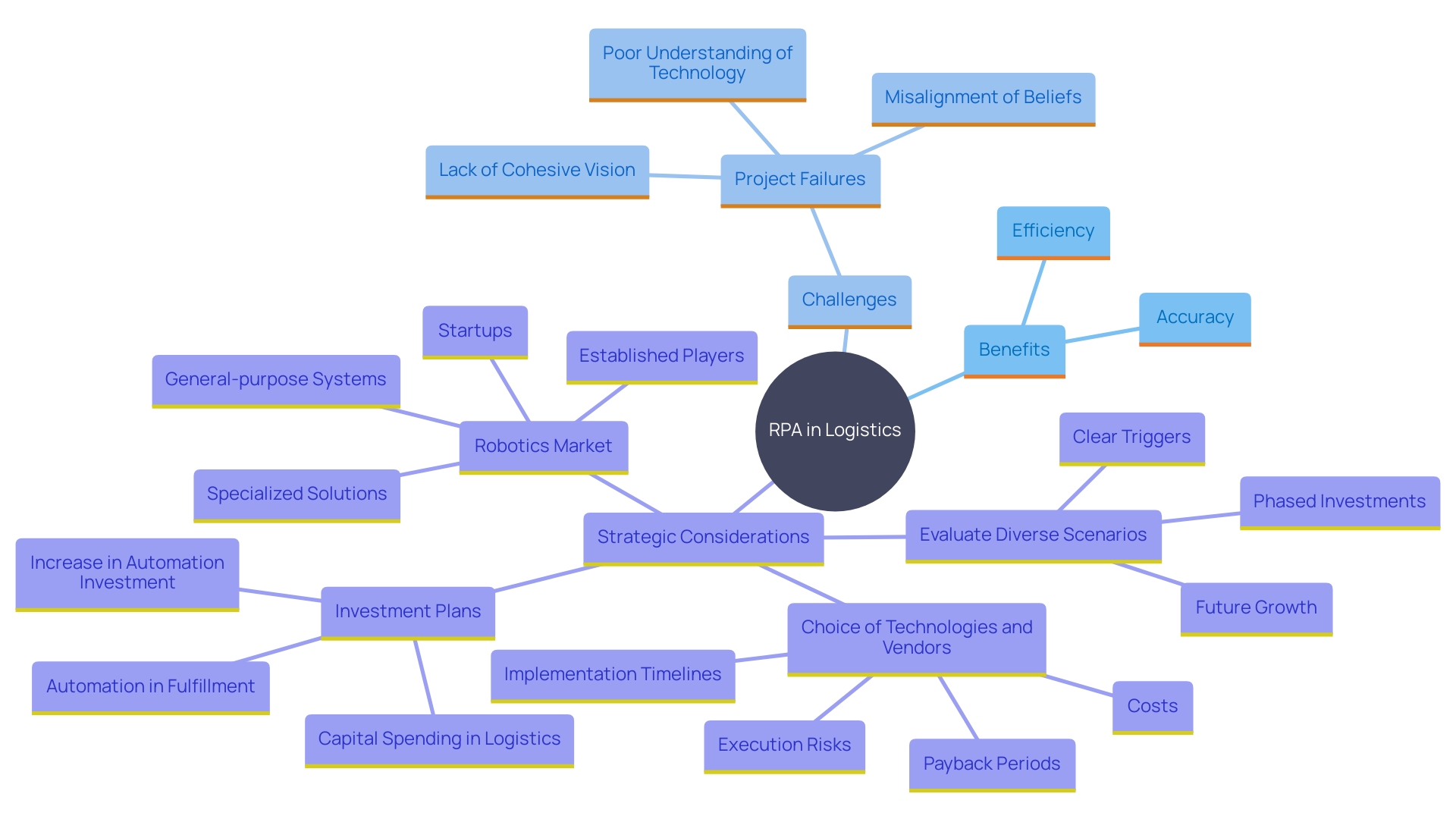
Key Applications of RPA in Supply Chain
Robotic Process Automation (RPA) can transform different logistical operations, greatly improving efficiency and precision. For instance, automating order processing, invoice management, and inventory checks helps streamline operations and reduce human error. Specific applications, such as supplier onboarding and automated customer service responses, improve the overall flow of information and customer satisfaction.
In a detailed case study, an organization leveraged a large language model (LLM) to create a consistent data taxonomy across decades of information. This enabled machine learning processes to identify similar components and make parts recommendations, optimizing order evaluation and inventory management. By integrating RPA and AI-driven solutions, they achieved faster order processing and more accurate assembly builds, cutting lead times and improving overall productivity.
Furthermore, organizations such as OnProcess are utilizing RPA to improve their logistics operations and customer experience while encouraging sustainability. Their expertise in reverse logistics and data-led decision-making ensures efficient planning and asset recovery. By integrating RPA with existing systems, organizations can eliminate bottlenecks, improve response times, and maintain a competitive edge in today’s dynamic market.
‘Melissa Twiningdavis, senior managing director of logistics operations at Accenture, emphasizes the significance of these advancements: ‘In recent years, logistics have emerged as one of the most crucial business functions on the CEO agenda.’. The challenge is to drive cost efficiency while continuing to embed and accelerate resiliency.’ This sentiment highlights the essential role of RPA in modernizing logistics and promoting sustainable growth.
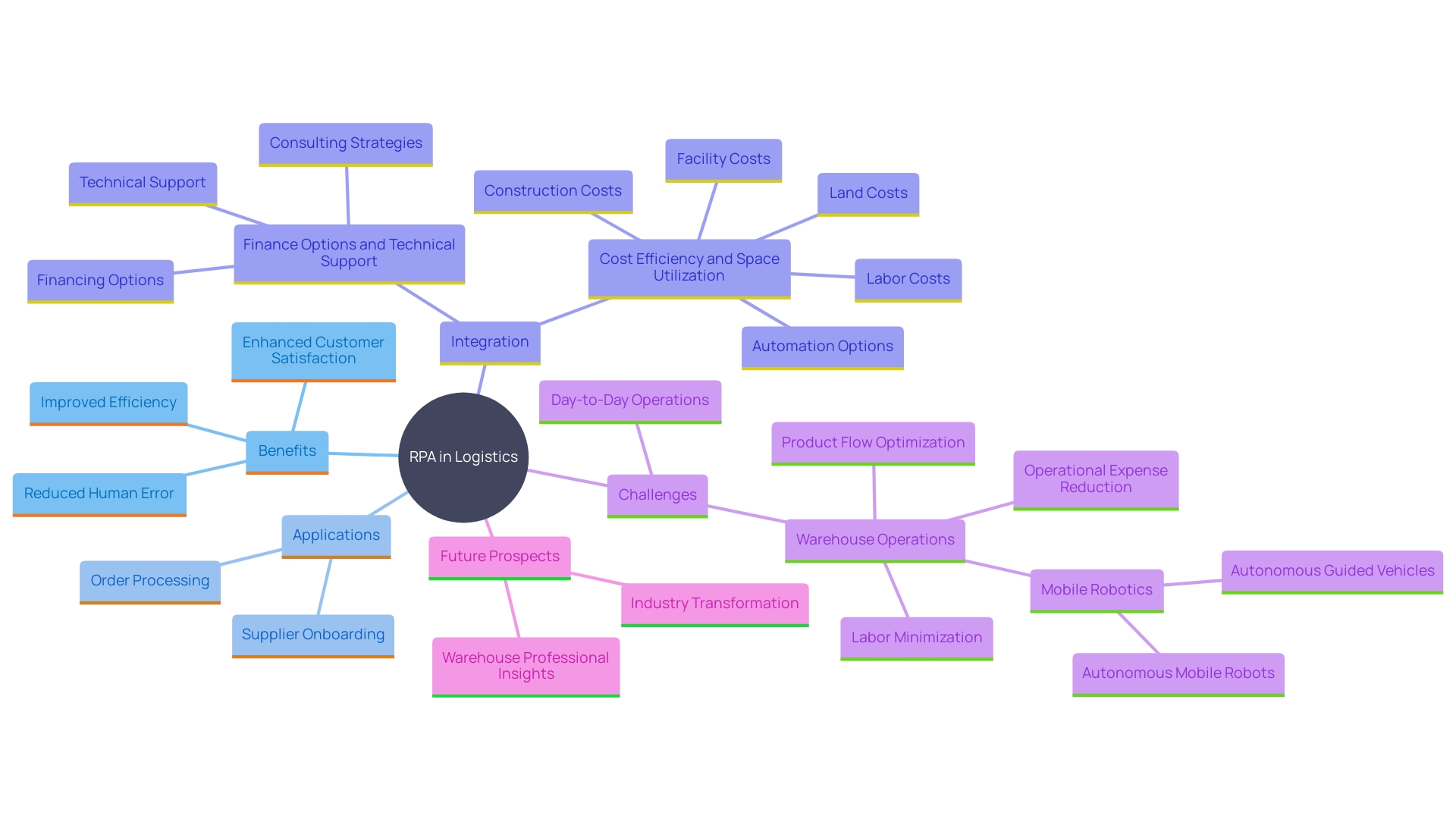
Best Practices for Implementing RPA in Supply Chain
Introducing RPA in the logistics network necessitates a strategic method beginning with a precise recognition of business requirements, including cost efficiency, service levels, and productivity. Engaging stakeholders across departments is paramount to ensure alignment and address potential resistance. Establishing guiding principles for technology selection is necessary to navigate the complexities of available tools. For instance, understanding the nuances of different RPA tools and evaluating vendors can make a significant difference.
Regular monitoring and continuous improvement of automated processes are crucial for maximizing the benefits of RPA. This ensures that the technology evolves alongside business demands. A lack of cohesive vision and poor understanding of technology for processes can lead to project failures, as evidenced by a consumer goods company that invested over $150 million in this technology but failed to achieve its goals due to inaccurate forecasts.
Furthermore, recent disruptions have underscored the significance of resilient networks. Companies are now utilizing technology to enhance speed, reliability, flexibility, and productivity. For instance, some are using intelligent workflows to orchestrate logistics processes, thereby minimizing human intervention. Automation in logistics and fulfillment is expected to account for more than a third of capital spending, underscoring its importance.
To address the challenges, companies should secure business-wide alignment on core beliefs and design principles. Establishing a cross-functional transformation office that includes key stakeholders from finance, operations, IT, and HR can govern the critical design principles and designate leaders for implementation. This approach ensures efficient use of resources, setting clear budget, timeline, and KPI targets.
Furthermore, evaluating diverse scenarios while allowing for future growth is essential. For instance, a larger initial investment in an AMR deployment might be beneficial if it allows for scalability. This staged funding strategy guarantees that automation expenditures stay in sync with organizational requirements over time, thereby offering a solid structure for the effective execution of RPA in the logistics network.
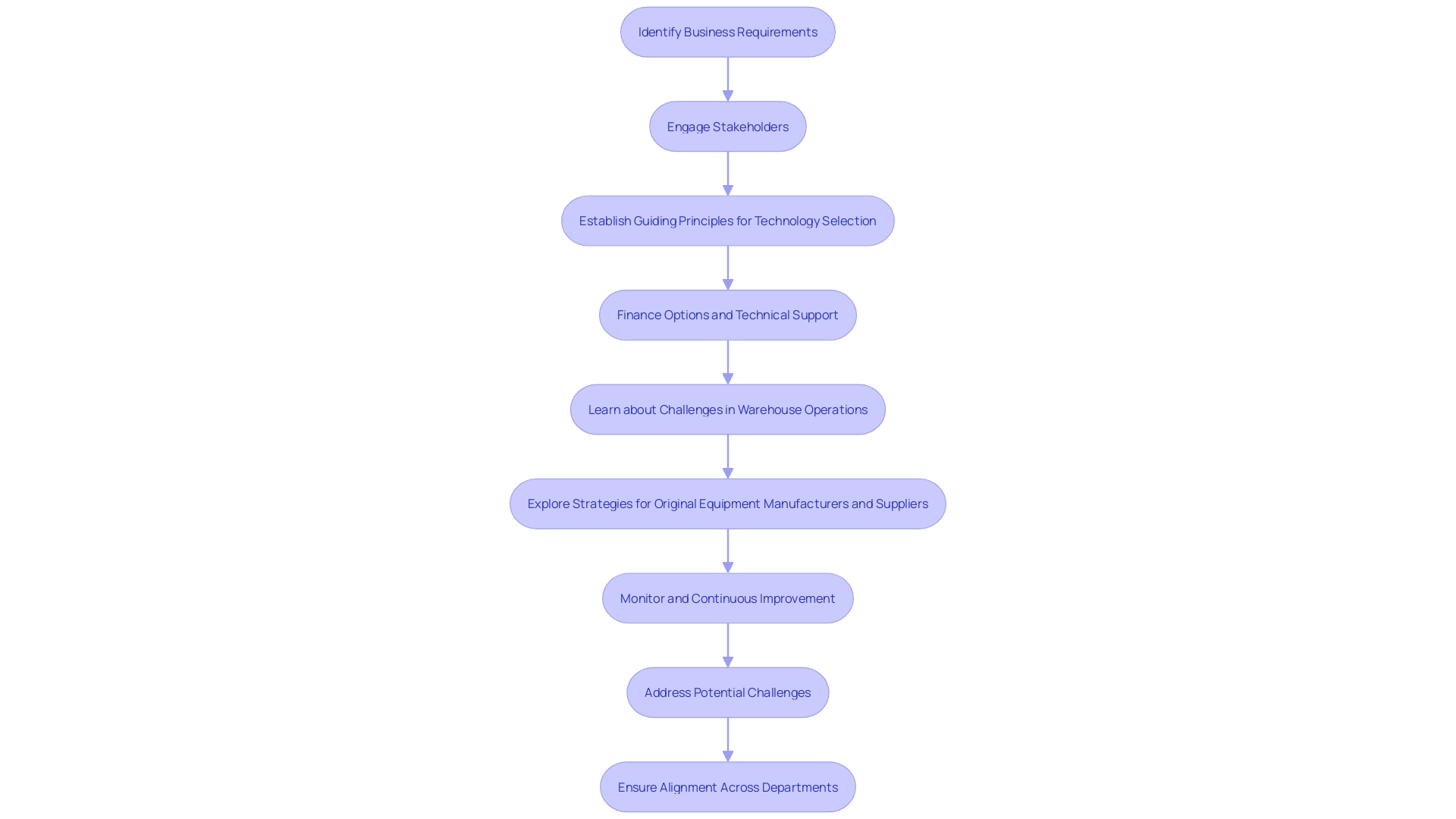
Future of RPA in Supply Chain Management
The future of RPA in logistics management is set for remarkable expansion, fueled by the rising acknowledgment of its revolutionary capabilities. As organizations lean into the capabilities of artificial intelligence and machine learning, RPA is set to evolve into a more sophisticated tool for smarter decision-making and predictive analytics.
Real-world examples, such as Renault’s digital transformation, underscore the tangible benefits of integrating RPA with emerging technologies. Since 2017, Renault has invested greatly in digital applications, culminating in the establishment of a comprehensive data lake that contains all logistical data. This foundation has allowed Renault to create a control tower for accurate oversight of resources, attaining an anticipated €45 million in digital value through AI-driven initiatives.
Additionally, the market for supply chain mechanization is expanding rapidly, with robot shipments anticipated to increase by up to 50% each year through 2030. Businesses are progressively concentrating on mechanization to improve the speed, reliability, flexibility, and productivity of their operations. This trend is evidenced by the growing investment in warehouse automation, which is anticipated to account for more than a third of capital spending in logistics and fulfillment sectors.
In this changing environment, cooperative networks enhanced by Industry 4.0 are becoming standard. Cloud-based platforms facilitate real-time communication and data sharing among stakeholders, ensuring seamless coordination from production to delivery. These innovations are not just theoretical; they are actively reshaping material handling processes, enabling companies to stay competitive in an ever-changing industry.
In conclusion, the integration of RPA with AI and machine learning is not just a future possibility but a present reality that is driving operational excellence and strategic growth in supply chain management.
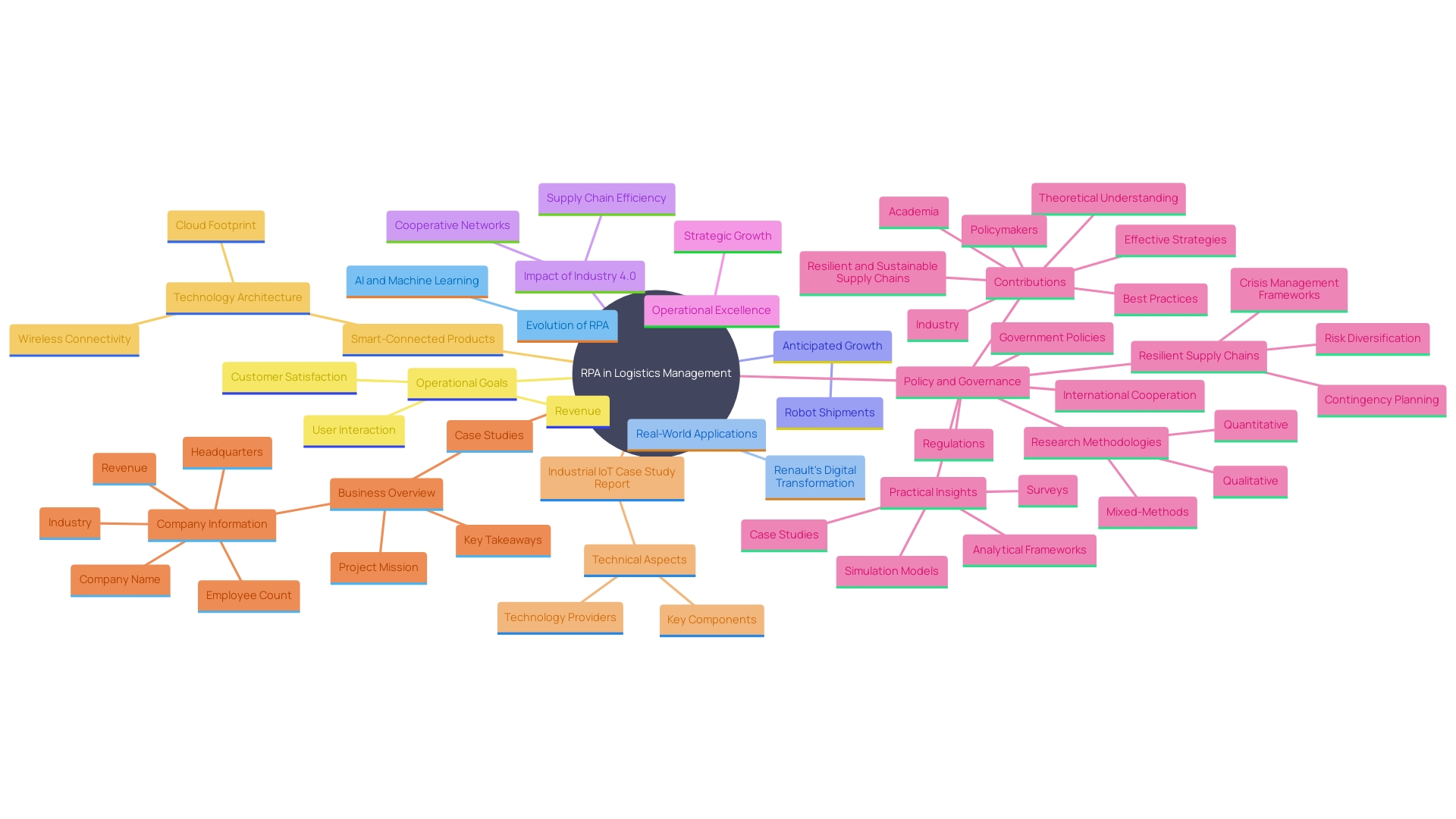
Conclusion
The transformative impact of Robotic Process Automation (RPA) on supply chain management is becoming increasingly evident. By automating repetitive tasks, RPA not only enhances operational efficiency but also significantly reduces processing times and minimizes errors. This capability allows organizations to manage peak demands more effectively and empowers human managers to concentrate on strategic initiatives, thereby boosting overall productivity.
As highlighted in various studies and real-world examples, the integration of RPA with AI and data-driven decision-making is crucial for achieving visibility and efficiency across the supply chain. Companies like OnProcess exemplify successful RPA implementation, demonstrating that a well-thought-out strategy can lead to remarkable improvements in logistics and fulfillment. However, the journey to effective automation is fraught with challenges, and a cohesive vision along with a deep understanding of technology is essential to avoid pitfalls.
Implementing RPA requires strategic planning, stakeholder engagement, and a commitment to continuous improvement. Establishing guiding principles and a cross-functional transformation office can facilitate alignment and governance throughout the process. Moreover, companies must remain agile, ready to adapt their automation strategies to meet evolving business needs and market conditions.
Looking ahead, the future of RPA in supply chain management is bright, with growth driven by advancements in AI and machine learning. Organizations that embrace these technologies will be better positioned to enhance their operational capabilities, ensuring they remain competitive in an increasingly complex landscape. By harnessing the full potential of RPA, companies can achieve not only operational excellence but also sustainable growth, paving the way for a more resilient supply chain ecosystem.

